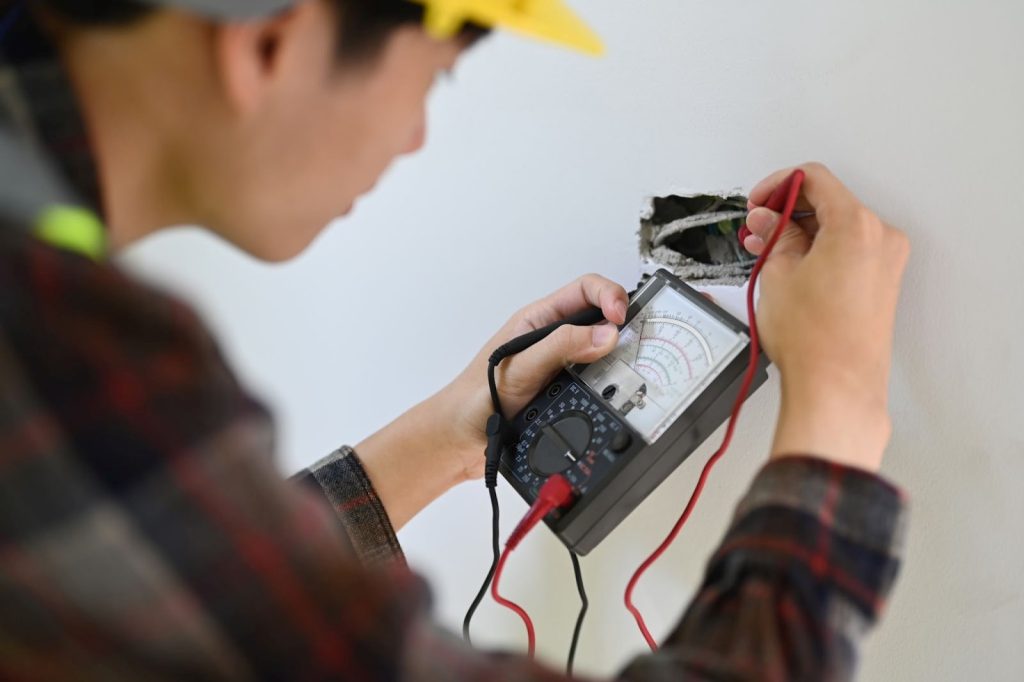As an employer or equipment owner, you may be wondering whether you need to carry out portable appliance testing (PAT) on your oven. With so much confusion surrounding PAT testing, it’s important to know which appliances require testing and which ones don’t. PAT testing is a method of ensuring that electrical appliances are safe to use. It involves inspecting and testing appliances to make sure they meet safety standards. However, there are certain appliances that don’t require PAT testing, and ovens may be one of them. In this article, we explain whether ovens need to be PAT tested, and what the regulations say about it.
What is a Portable Appliance Test?
A portable appliance test (PAT) is a process of testing electrical appliances to make sure they are safe to use. The test is typically carried out by a qualified electrician or a trained PAT tester, and it involves a combination of visual inspections and electrical tests.
The visual inspection involves checking the appliance for any damage or wear and tear that could make it unsafe to use. This includes checking the power cord, plug, and any other components for signs of damage, such as fraying or cracking. The visual inspection also involves checking that the appliance is properly grounded and that there are no loose connections.
The electrical tests involve using specialized equipment to measure various aspects of the appliance’s electrical performance. This includes testing for things like insulation resistance, earth continuity, and leakage current. The tests are designed to identify any potential electrical faults or defects that could cause harm to the user or damage to the appliance itself.
Once the PAT is complete, the electrician or PAT tester will provide a report that outlines the results of the test and any recommended actions that need to be taken to ensure the appliance is safe to use. If any faults or defects are identified, the appliance may need to be repaired or replaced before it can be used again.
How much does PAT testing my appliances cost?
Why are electrical safety inspections important?
Electrical safety inspections are important to ensure that electrical installations and appliances are safe to use and comply with relevant regulations and standards. Electrical systems and equipment can pose significant hazards if they are not properly installed, maintained, and tested. These hazards can include electric shock, fire, and damage to property and equipment.
Do I need to PAT test a built-in oven?
Yes, a built-in oven should be considered for PAT testing to ensure its safety. While a built-in oven is not portable in the traditional sense, it is still an electrical appliance that can pose a safety risk if it is not properly maintained or if faults develop over time.
Do all electrical items need PAT testing?
Not all electrical items require PAT testing. The need for PAT testing depends on the level of risk associated with the electrical equipment and the environment in which it is used. Low-risk items such as stationary equipment requiring a simple plug-in connection may not require PAT testing.
However, high-risk electrical items used in hazardous environments, such as construction sites or hospitals, must undergo PAT testing to ensure they are safe to use. It is important to conduct a risk assessment to determine which electrical items require PAT testing and how often they should be tested.
Do I need to PAT test new equipment?
Do stationary appliances need PAT testing?
Yes, stationary appliances typically need PAT testing in order to ensure their safety. Stationary appliances, such as fridges, freezers, and washing machines, are connected to a fixed electrical supply and remain in one location, but they can still pose a safety risk if they are not properly maintained or if faults develop over time.
What Needs PAT Testing?
In general, any electrical appliance that has the potential to cause harm should be considered for PAT testing to ensure its continued safety. This includes both portable and stationary appliances that are used in the workplace or in public areas.
Examples of portable appliances that may need PAT testing include:
- Computers and monitors
- Kettles and coffee machines
- Toasters and microwaves
- Power tools and other portable equipment
- Extension cords and power strips
Examples of stationary appliances that may need PAT testing include:
- Refrigerators and freezers
- Washing machines and dryers
- Air conditioning units
- Ovens and stoves
- Water heaters and boilers
It is important to note that the specific appliances that need PAT testing will depend on the individual workplace and the risks associated with each appliance. Employers have a legal obligation to ensure that electrical equipment is safe for use and should conduct a risk assessment to determine which appliances need to be tested and how frequently the testing should be carried out.
Do I need to get my blender PAT tested?
When should appliances be PAT tested?
The frequency of PAT testing depends on a number of factors, including the type of appliance, its intended use, and the environment in which it is being used. In general, it is recommended that appliances be PAT tested at regular intervals to ensure their continued safety.
The Health and Safety Executive (HSE) in the UK provides guidelines on the recommended frequency of PAT testing, but these are not legal requirements. The HSE suggests that appliances in low-risk environments, such as offices or shops, be tested every 2-4 years. Appliances in higher-risk environments, such as construction sites or industrial settings, may need to be tested more frequently, possibly as often as every 3 months.
It is important to note that these are only guidelines, and the actual frequency of testing will depend on a number of factors specific to the individual workplace and appliances being used. Employers have a legal obligation to ensure that electrical equipment is safe for use and should conduct a risk assessment to determine the appropriate frequency of PAT testing based on their specific circumstances. In addition, it is important to have appliances PAT tested after any repairs or modifications are made, or if they are moved to a new location or put into storage for an extended period of time.
Can you PAT test your own equipment?
PAT testing services
PAT testing services are essential for ensuring that appliances, such as ovens, are safe to use. At LegionellaRiskandPAT.com, we offer fully compliant and comprehensive portable appliance testing across the whole of Scotland at some of the most competitive prices on the market.


